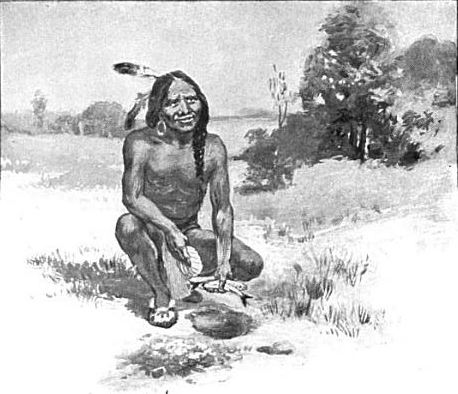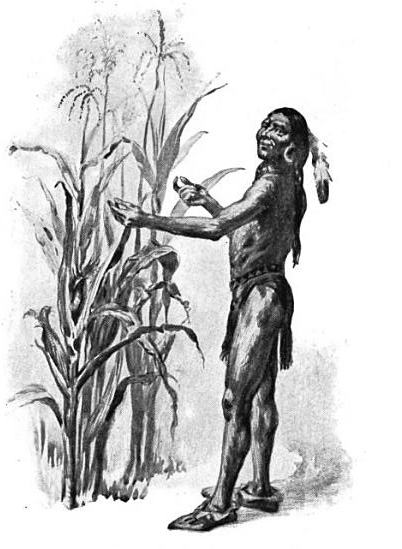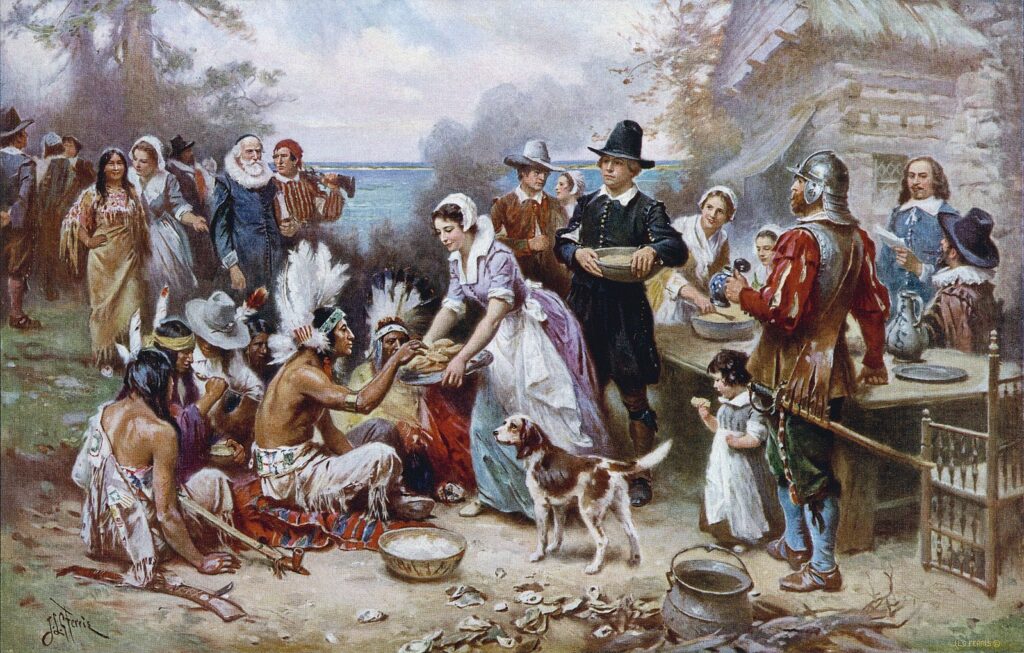Like many things involving the settling of the Americas and early European contact with Native Americans, the mythology of a Native guide named Squanto has been twisted and convoluted over time.
Squanto and the part he played in the history of the Thanksgiving holiday is more complicated than you might imagine. For instance, did you know that Squanto wasn’t even his true name?
Taken from his home, across the ocean, and back again, Squanto spent a portion of his life as a slave to European settlers. He lost both his freedom and his name in the process.
In this article, we’ll look deeper into the true story of Squanto–or as he was known before he was enslaved, Tisquantum.

Squanto’s Native Roots and the Patuxet Tribe
Before his first contact with Europeans, Squanto lived a low-profile life with the tribe in which he was born, the Patuxet Tribe of the Wampanoags. Very little is known about Squanto’s early life. It’s believed that he was in his twenties or thirties when he was captured and forced into slavery for the Europeans.
The Patuxets were a portion of an overarching group of Native Americans in New England called the Ninnismissinuok, or simply “people”. The smaller tribes that made up this large grouping all spoke a version of the Algonquin language, though there were variations and idiosyncrasies specific to each tribe.
Squanto’s Native Name
One of the first, and greatest, injustices that Squanto faced was the changing of his name. Most names have a deeper meaning behind them, but “Squanto” as a name is meaningless.
Instead, it was a shortened version of his real name, which was fierce and powerful. The name “Squanto” was neither of those things.
Squanto’s real name is Tisquantum. Its meaning is very odd when connected with the story of the helpful Native that most people are told.
Tisquantum means rage, or the rage of the manitou. The word manitou means the heart of spiritual power in Algonquian, so to put it in the simplest terms, Tisquantum means wrath of god.
Squanto’s First Encounter With Europeans and Abduction to Spain
Before Squanto was ever a part of the first Thanksgiving, he had already had a major life-changing encounter with English explorers. In 1614, an expedition led by none other than John Smith of Jamestown fame made landfall in Plymouth Harbor and tried to initiate trade with the Patuxet tribe.
By this time, John Smith had sailed back to England, and the ship that Squanto encountered was captained by the second-in-command of the expedition, Thomas Hunt. This expedition was only meant to harvest fish, but Hunt had other ideas.
Thomas Hunt offered to trade with the Native Americans, inviting them onto his ship where he trapped them. Among the 20 Native Americans that were captured was Tisquatum, who would soon come to be known as Squanto.
After abducting Natives from other tribes, Hunt sailed back to Málaga, Spain, with his human cargo in tow.
Once Hunt reached Spain, he faced immediate disapproval from John Smith and other superior officers. One major question from this time was, who freed Squanto from slavery?
Interestingly enough, it was Christian monks, also called Friars, who stopped Hunt when he tried to sell the Native Americans off quickly. After some time, Squanto would be smuggled on a ship to England, and eventually back to New England.
While his time in Europe was undoubtedly difficult, he did acquire skills that would serve him well later in life, like shipbuilding and the ability to speak English fluently.
Accounts of how long Squanto was in Europe are vague, but we do know that, by 1619, he was back in Massachusetts. Tragically, upon his arrival, he found all inhabitants of his home village had perished–victims of illness brought over by European settlers. Squanto was truly alone.
Squanto and the Pilgrims
By this time, Squanto had fallen in with an explorer named Thomas Dermer. It would be with Dermer that he would discover his decimated village.
Afterward, the two would continue to travel, encountering hostile warriors from other tribes that Squanto would entreat with, saving Dermer’s life. But the adventurer’s luck didn’t hold forever, and he eventually died in Virginia.
Squanto was living with a nearby tribe, the Pokanokets when he was sought out by another American Indian named Samoset, who needed Squanto for his fluent English. Squanto would prove to be incredibly valuable to the colony, called Plymouth, and played a big part in their survival.

The First Thanksgiving
Squanto’s teachings led the colony to have its first successful harvest.
At the time, there were tensions between the settlers and the Pokanoket tribe led by Chief Massasoit. When the Pilgrims fired off their weapons in celebration of this harvest, the Pokanoket Wampanoag feared that it was a sign of aggression.
Outside of the border of Plymouth, the tribesmen gathered, but when they realized that there was no immediate threat, the Pokanoket warriors instead hunted deer and brought the venison to the settlement. There the Pilgrims and the Native Americans shared a meal, and this meal was the basis for the first Thanksgiving.
Oddly enough, Squanto was not mentioned by name in any of the recorded retellings of this event. But since he was living at Plymouth with the Pilgrims at the time, he did likely attend the feast, just not in nearly as large a capacity as stories might lead you to believe.

Squanto’s Life After the First Thanksgiving
Following his participation in the first Thanksgiving, Squanto stuck with the Pilgrims and continued to help them both as an interpreter and a guide. He was a skilled diplomat when working with other Native Americans, and he helped facilitate a period of relative peace between the Wampanoag people and Plymouth.
This peace wouldn’t last forever, though, and tragically Squanto would lose his life just a year later in November of 1622. He came down with what the Governor of Plymouth Colony, William Bradford called the “Indian Fever”. This mysterious illness came upon Squanto swiftly, and he was reported to have been bleeding from the nose before he perished.
While it’s possible that Sqanto could have suffered from any number of different diseases brought to the Americas by Europeans, there were also rumors that he had been poisoned by Chief Massasoit.
Unfortunately, we have no clear answers to what might have caused the death of such an influential figure, and while the tales of Tisqunatum’s life might have become twisted through the years, he remains an enormous part of early American history.
